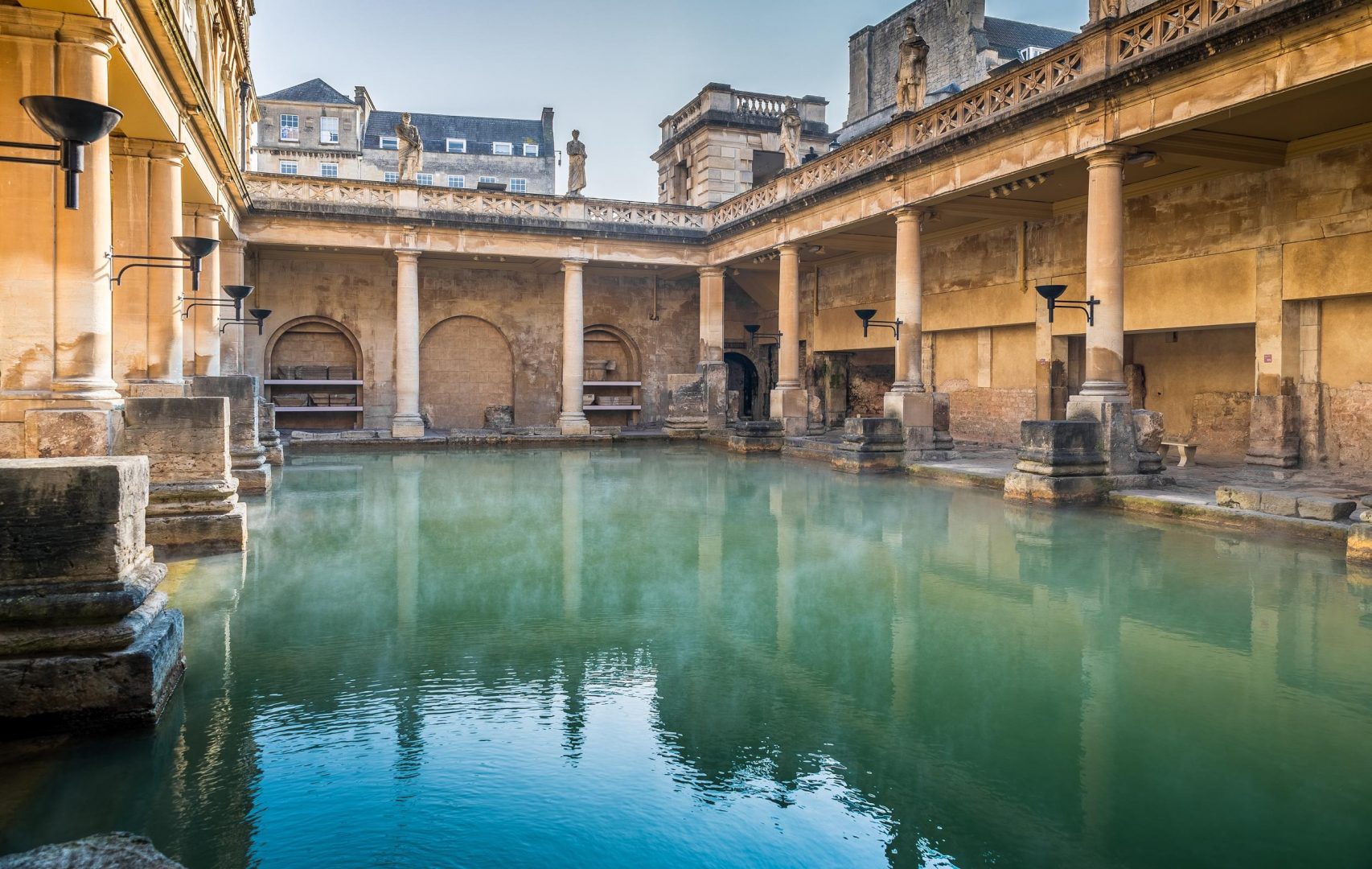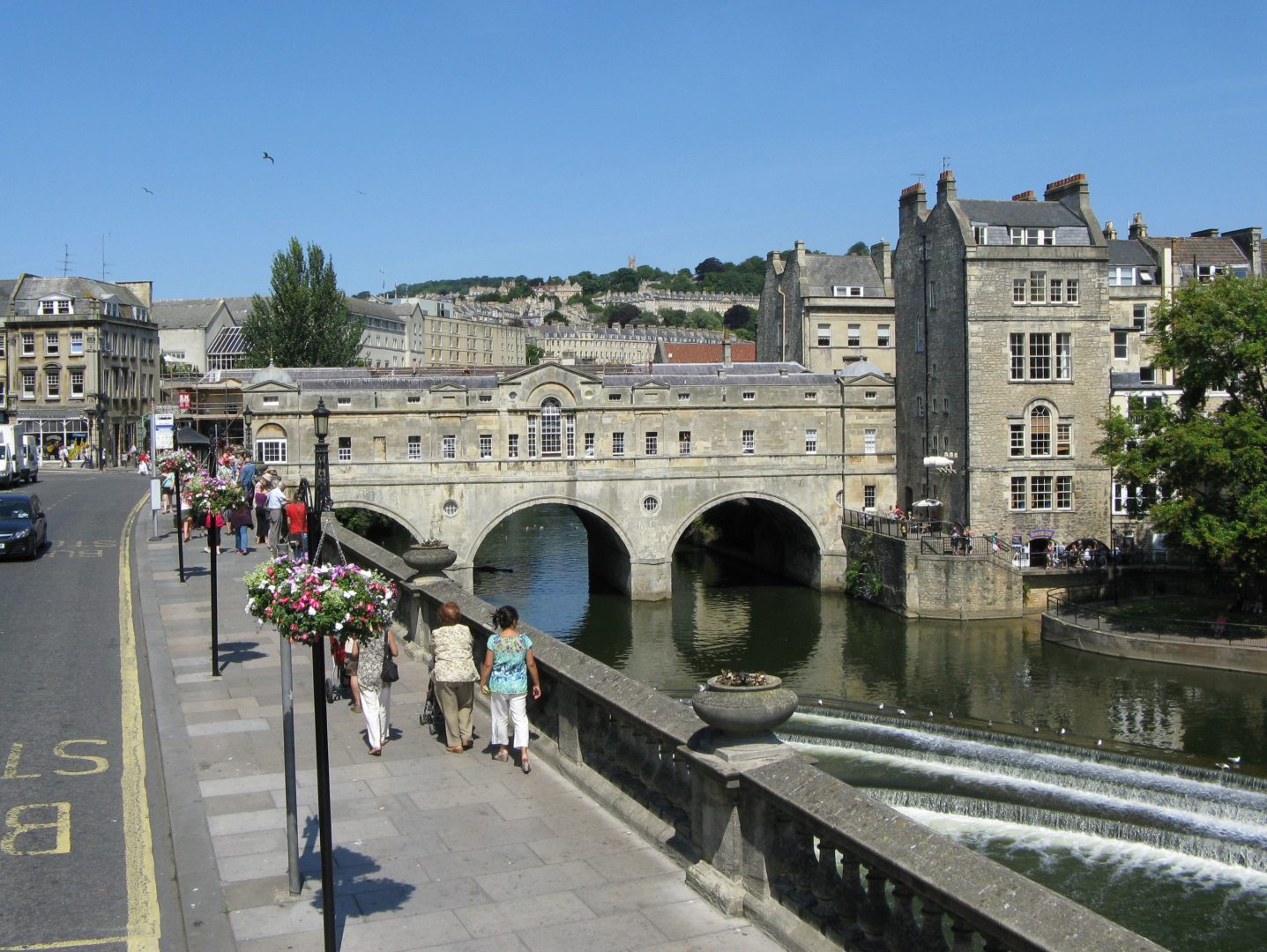Bath is the largest city in England’s Somerset province, which is known and named after its Roman baths.
Bath is the largest city in England’s Somerset province, which is known and named after its Roman baths. In 2011, the population was 88,859. Bath is located in the valley of the River Avon, 97 miles west of London and 11 miles southeast of Bristol. The city became a World Heritage Site in 1987.
1. The Roman Baths

The Roman Baths are a well-preserved thermae in the city of Bath, Somerset, England. A temple was constructed on the site between 60-70CE in the first few decades of Roman Britain. Its presence led to the development of the small Roman urban settlement known as Aquae Sulis around the site. The Roman baths, which were used for public bathing, were used until the end of Roman rule in Britain in the 5th Century CE. According to the Anglo-Saxon Chronicle, the original Roman baths were in ruins a century later. The area around the natural springs was redeveloped several times during the Early and Late Middle Ages.
2. Bath Abbey

Bath Abbey is a parish church of the Church of England and former Benedictine monastery in Bath, Somerset, England. Founded in the 7th century, it was reorganized in the 10th century and rebuilt in the 12th and 16th centuries; major restoration work was carried out by Sir George Gilbert Scott in the 1860s. It is one of the largest examples of Perpendicular Gothic architecture in the West Country. The medieval abbey church served as a sometime cathedral of a bishop.
3. Pulteney Bridge

Pulteney Bridge crosses the River Avon in Bath, England. It was completed by 1774 and connected the city with the land of the Pulteney family which they wished to develop. Designed by Robert Adam in a Palladian style, it is exceptional in having shops built across its full span on both sides. It has been designated as a Grade I listed building. Within 20 years of its construction, alterations were made that expanded the shops and changed the façades.
4. Thermae Bath Spa

Thermae Bath Spa is a combination of the historic spa and a contemporary building in the city of Bath, England, and re-opened in 2006. Bath and North East Somerset council own the buildings, and, as decreed in a Royal Charter of 1590, are the guardians of the spring waters, which are the only natural hot, mineral-rich waters in the UK.
5. Prior Park Landscape Garden

Prior Park Landscape Garden surrounding the Prior Park estate south of Bath, Somerset, England, was designed in the 18th century by the poet Alexander Pope and the landscape gardener Capability Brown and is now owned by the National Trust. The garden was influential in defining the style known as the “English landscape garden” in continental Europe. The garden is Grade I listed in the Register of Historic Parks and Gardens of special historic interest in England.
